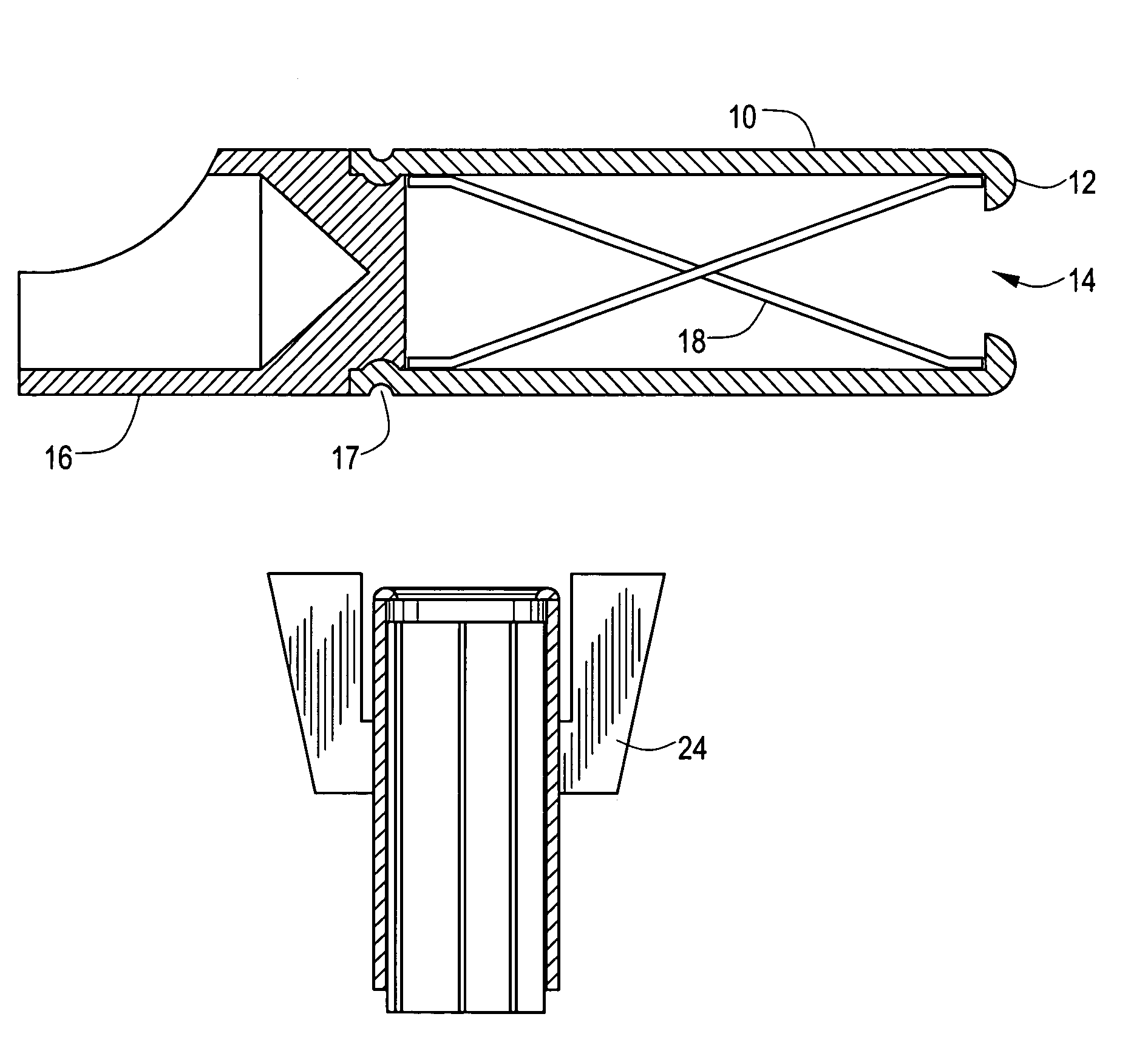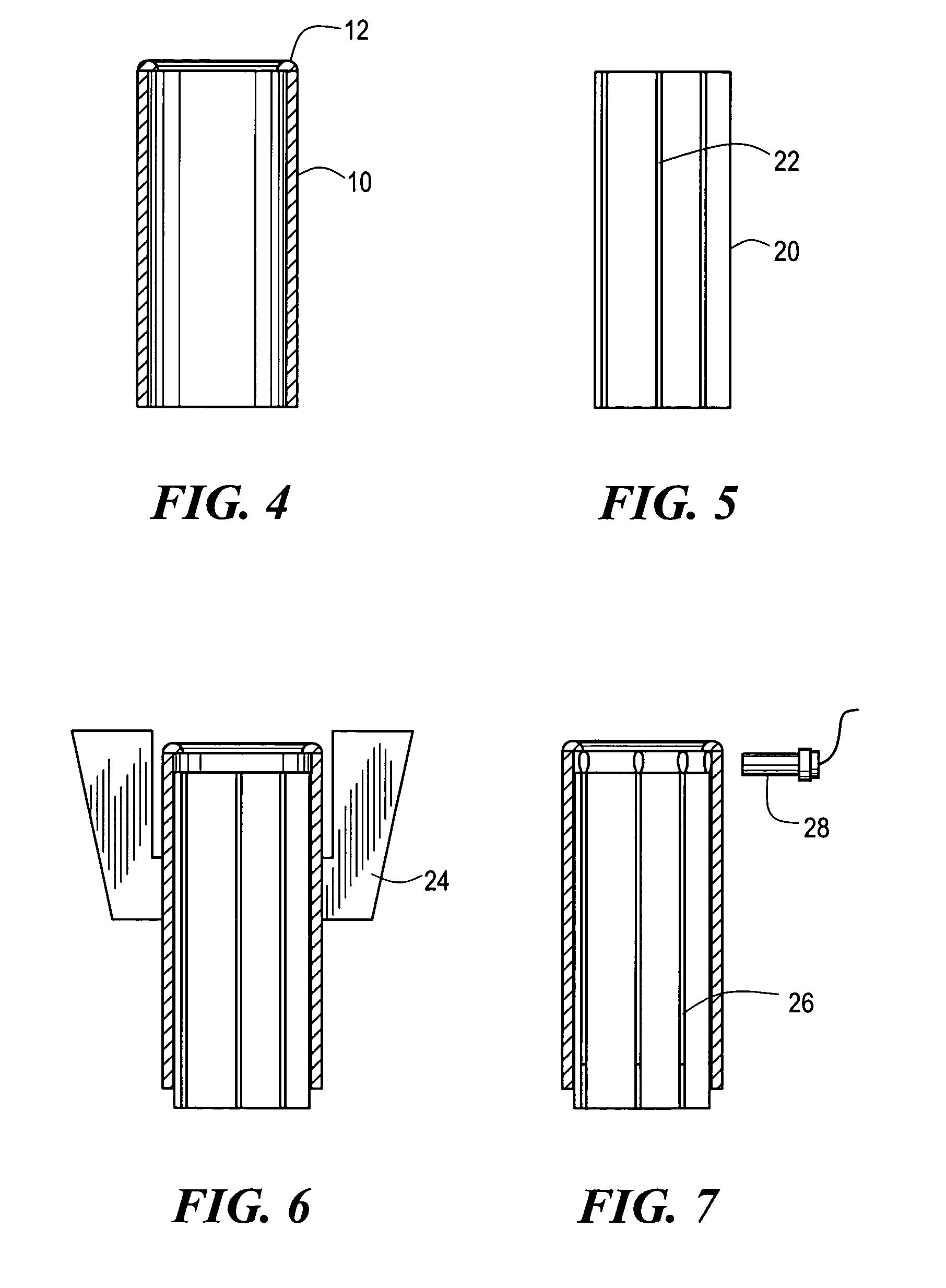Method of making a hyperboloid electrical contact
- Summary
- Abstract
- Description
- Claims
- Application Information
AI Technical Summary
Benefits of technology
Problems solved by technology
Method used
Image
Examples
Embodiment Construction
[0041]Referring to FIGS. 2 and 3 there is shown a contact socket in accordance with the invention which comprises a tubular body 10 of a suitable metal or other conductive material and having a lip 12 defining an aperture 14 for receiving a mating pin terminal, and having a termination 16 for attachment to a circuit board or other item. The tubular body contains a plurality of conductive wires 18 welded or otherwise conductively and permanently affixed at their respective ends to the outer and inner ends of the body and disposed in an angular disposition to the longitudinal axis to form a hyperboloid shape. In the illustrated embodiment, the body 10 is attached to termination 16 at juncture 17 by rolling, crimping, swaging or other suitable means to provide mechanical and conductive attachment.
[0042]The method of making the contact socket will be described in conjunction with FIGS. 4–9. FIG. 4 shows a tubular body 10 preferably having a lip 12. In FIG. 5 there is shown a mandrel 20 ...
PUM
| Property | Measurement | Unit |
|---|---|---|
| Length | aaaaa | aaaaa |
| Electrical conductivity | aaaaa | aaaaa |
| Shape | aaaaa | aaaaa |
Abstract
Description
Claims
Application Information
 Login to View More
Login to View More - R&D
- Intellectual Property
- Life Sciences
- Materials
- Tech Scout
- Unparalleled Data Quality
- Higher Quality Content
- 60% Fewer Hallucinations
Browse by: Latest US Patents, China's latest patents, Technical Efficacy Thesaurus, Application Domain, Technology Topic, Popular Technical Reports.
© 2025 PatSnap. All rights reserved.Legal|Privacy policy|Modern Slavery Act Transparency Statement|Sitemap|About US| Contact US: help@patsnap.com



